The Dominant Role of Recrystallization and Grain Growth Behaviors in the Simulated Welding Heat-Affected Zone of High-Mn Steel
Abstract
:1. Introduction
2. Materials and Methods
2.1. Materials
2.2. Welding Thermal Cycle Simulation
2.3. Mechanical Properties Measurement
2.4. Microstructure Characterization
3. Results
3.1. Microstructure of the Investigated High-Mn Steel
3.2. Mechanical Properties after Thermal Cycling
3.3. Microstructure Evolution after Thermal Cycling
4. Discussion
4.1. Effect of Microstructure by Welding Thermal Cycles on Mechanical Properties
4.2. Division of HAZ for the Investigated High-Mn Steel
5. Conclusions
- (1)
- No phase transformation was observed in the simulated HAZ. The microstructure and mechanical properties of the simulated HAZ were mainly governed by the recrystallization and grain growth behaviors. Accordingly, we proposed that the HAZ can be classified into three zones: the recrystallization heat-affected zone (RHAZ) with a Tp of 700~900 °C, the transition heat-affected zone (THAZ) with a Tp of 900~1000 °C, and the coarse grain heat-affected zone (CGHAZ) with a Tp of 1000~1300 °C.
- (2)
- The recrystallization fraction was 29~44% in the RHAZ, rapidly increased to 87% in the THAZ, and exceeded 95% in the CGHAZ. The average grain size was 17~19 μm in the RHAZ, slightly increased to 22 μm in the THAZ, and ultimately increased to 37 μm in the CGHAZ. The recrystallization fraction and grain size of the HAZ were primarily influenced by the Tp of the welding thermal cycles. The changes in the recrystallization fraction and grain size in the HAZ were closely related to the Tp of the welding thermal cycles.
- (3)
- The hardness, yield strength, ultimate tensile strength, and uniform elongation of the high-Mn steel (base material) were approximately 230 HV, 494 MPa, 841 MPa, and 52%, respectively. From RHAZ to CGHAZ, the strength and hardness showed a decreasing trend. Compared with the CGHAZ, which had a uniform elongation of 59%, the RHAZ had a relatively lower uniform elongation of 51%. The yield strength in the RHAZ and THAZ was consistent with the change in recrystallization fraction, while in the CGHAZ, it satisfied the Hall–Petch relationship with grain size. The Hall–Petch coefficient was determined to be 488 MPa∙μm1/2. In addition, compared with the base material, the Charpy impact absorbed energy at −196 °C decreased by 22% in the RHAZ, but slightly increased in the CGHAZ. This indicates that the theory of fine grain strengthening and toughening is not entirely applicable to the HAZ of the investigated high-Mn steel.
Author Contributions
Funding
Institutional Review Board Statement
Informed Consent Statement
Data Availability Statement
Conflicts of Interest
References
- Tang, L.; Wang, L.; Wang, M.; Liu, H.; Kabra, S.; Chiu, Y.; Cai, B. Synergistic Deformation Pathways in a TWIP Steel at Cryogenic Temperatures: In Situ Neutron Diffraction. Acta Mater. 2020, 200, 943–958. [Google Scholar] [CrossRef]
- Chen, J.; Ren, J.; Liu, Z.; Wang, G. The Essential Role of Niobium in High Manganese Austenitic Steel for Application in Liquefied Natural Gas Tanks. Mater. Sci. Eng. A 2020, 772, 138733. [Google Scholar] [CrossRef]
- Wang, X.J.; Sun, X.J.; Song, C.; Chen, H.; Han, W.; Pan, F. Enhancement of Yield Strength by Chromium/Nitrogen Alloying in High-Manganese Cryogenic Steel. Mater. Sci. Eng. A 2017, 698, 110–116. [Google Scholar] [CrossRef]
- Han, K.; Yoo, J.; Lee, B.; Han, I.; Lee, C. Hot Ductility and Hot Cracking Susceptibility of Ti-Modified Austenitic High Mn Steel Weld HAZ. Mater. Chem. Phys. 2016, 184, 118–129. [Google Scholar] [CrossRef]
- De Cooman, B.C.; Estrin, Y.; Kim, S.K. Twinning-Induced Plasticity (TWIP) Steels. Acta Mater. 2018, 142, 283–362. [Google Scholar] [CrossRef]
- Deng, H.; Liu, Z.; Wang, X.; Ma, J.; Han, F.; Wang, Z. Effect of Heat Input on the Microstructure and Mechanical Properties of the Simulated Coarse-Grained Heat-Affected Zone (CGHAZ) of Novel Twining-Induced Plasticity(TWIP) Steel. Mater. Today Commun. 2022, 33, 104407. [Google Scholar] [CrossRef]
- Wang, T.; Zhang, M.; Xiong, W.; Liu, R.; Shi, W.; Li, L. Microstructure and Tensile Properties of the Laser Welded TWIP Steel and the Deformation Behavior of the Fusion Zone. Mater. Des. 2015, 83, 103–111. [Google Scholar] [CrossRef]
- Park, G.W.; Park, M.; Kim, B.J.; Shin, S.; Kim, H.C.; Park, I.W.; Park, S.S.; Jeon, J.B. Microstructure and Mechanical Properties of a Gas-Tungsten-Arc-Welded Fe-24Mn-3.5Cr-0.4C High Manganese Steel Pipe Using a Fe-22Mn-2.34Ni-0.38C Welding Wire. Mater. Charact. 2022, 194, 112469. [Google Scholar] [CrossRef]
- Yin, C.-C.; Cheng, L.; Wang, Z.-H.; Zhao, T.-L.; Cheng, S.; Hu, S.-E.; Liu, Z.-C.; Luo, D.; Xiao, D.; Jin, X.; et al. Local Corrosion Behaviors in the Coarse-Grained Heat-Affected Zone in a Newly Developed Zr–Ti–Al–RE Deoxidized High-Strength Low-Alloy Steel. Materials 2023, 16, 876. [Google Scholar] [CrossRef]
- Ma, C.; Peng, Q.; Mei, J.; Han, E.-H.; Ke, W. Microstructure and Corrosion Behavior of the Heat Affected Zone of a Stainless Steel 308L-316L Weld Joint. J. Mater. Sci. Technol. 2018, 34, 1823–1834. [Google Scholar] [CrossRef]
- Xing, M.; Wan, Y.; Zhang, X.; Lin, F.; Zhang, P.; Huang, Z. Microstructure Evolution and Microhardness of Thermal-Simulated HAZ in Fe–Mn–Al–C Steel. Mater. Sci. Technol. 2023, 39, 531–542. [Google Scholar] [CrossRef]
- Xie, B.; Li, H.; Ning, Y.; Fu, M. Discontinuous Dynamic Recrystallization and Nucleation Mechanisms Associated with 2-, 3- and 4-Grain Junctions of Polycrystalline Nickel-Based Superalloys. Mater. Des. 2023, 231, 112041. [Google Scholar] [CrossRef]
- Song, J.; Chen, Y.; Hao, X.; Wang, M.; Ma, Y.; Xie, J. Microstructure and Mechanical Properties of Novel Ni–Cr–Co-Based Superalloy GTAW Joints. J. Mater. Res. Technol. 2024, 29, 2758–2767. [Google Scholar] [CrossRef]
- Fang, J.X.; Wang, J.X.; Wang, Y.J.; He, H.T.; Zhang, D.B.; Cao, Y. Microstructure Evolution and Deformation Behavior during Stretching of a Compositionally Inhomogeneous TWIP-TRIP Cantor-like Alloy by Laser Powder Deposition. Mater. Sci. Eng. A 2022, 847, 143319. [Google Scholar] [CrossRef]
- Yin, C.; Cheng, L.; Cheng, S.; Wang, Z.; Hu, S.-E.; Liu, Z.; Luo, D.; Xiao, D.; Jin, X.; Liu, H.; et al. Simulated Coarse Grain Heat-Affected Zone Transformation Behavior of Newly Developed Zr–Ti–RE Deoxidized High-Strength Low-Alloy Steels with Extremely High Impact Toughness. Steel Res. Int. 2023, 94, 2200343. [Google Scholar] [CrossRef]
- Yang, J.; Dong, H.; Li, P.; Xia, Y.; Wu, W.; Wang, B. Analysis of Microstructural Evolution and Mechanical Properties in the Simulated Heat-Affected Zone of Fe-23Mn-0.45C-1.5Al High-Mn Austenitic Steel. J. Mater. Res. Technol. 2022, 20, 1110–1126. [Google Scholar] [CrossRef]
- Ren, J.K.; Chen, Q.Y.; Chen, J.; Liu, Z.Y. On Mechanical Properties of Welded Joint in Novel High-Mn Cryogenic Steel in Terms of Microstructural Evolution and Solute Segregation. Metals 2020, 10, 478. [Google Scholar] [CrossRef]
- Yang, J.; Dong, H.; Xia, Y.; Li, P.; Wu, W.; Wang, B. Precipitation Behavior of Carbides and Cryogenic Toughness in Heat-Affected Zone of High-Mn Twinning-Induced Plasticity Steel Welded Joint. J. Manuf. Process. 2021, 68, 716–727. [Google Scholar] [CrossRef]
- Taiwade, R.V.; Patil, A.P.; Ghugal, R.D.; Patre, S.J.; Dayal, R.K. Effect of Welding Passes on Heat Affected Zone and Tensile Properties of AISI 304 Stainless Steel and Chrome-Manganese Austenitic Stainless Steel. ISIJ Int. 2013, 53, 102–109. [Google Scholar] [CrossRef]
- Jo, M.C.; Lee, H.; Zargaran, A.; Ryu, J.H.; Sohn, S.S.; Kim, N.J.; Lee, S. Exceptional Combination of Ultra-High Strength and Excellent Ductility by Inevitably Generated Mn-Segregation in Austenitic Steel. Mater. Sci. Eng. A 2018, 737, 69–76. [Google Scholar] [CrossRef]
- Kim, H.; Park, J.; Jung, J.E.; Sohn, S.S.; Lee, S. Interpretation of Cryogenic-Temperature Charpy Fracture Initiation and Propagation Energies by Microstructural Evolution Occurring during Dynamic Compressive Test of Austenitic Fe–(0.4,1.0)C–18Mn Steels. Mater. Sci. Eng. A 2015, 641, 340–347. [Google Scholar] [CrossRef]
- Lee, S.I.; Lee, S.Y.; Han, J.; Hwang, B. Deformation Behavior and Tensile Properties of an Austenitic Fe-24Mn-4Cr-0.5C High-Manganese Steel: Effect of Grain Size. Mater. Sci. Eng. A 2019, 742, 334–343. [Google Scholar] [CrossRef]
- Chen, J.; Dong, F.; Liu, Z.; Wang, G. Grain Size Dependence of Twinning Behaviors and Resultant Cryogenic Impact Toughness in High Manganese Austenitic Steel. J. Mater. Res. Technol. 2021, 10, 175–187. [Google Scholar] [CrossRef]
- Zhong, S.; Xu, C.; Li, Y.; Li, W.; Luo, H.; Peng, R.; Jia, X. Hierarchy Modification Induced Exceptional Cryogenic Strength, Ductility and Toughness Combinations in an Asymmetrical-Rolled Heterogeneous-Grained High Manganese Steel. Int. J. Plast. 2022, 154, 103316. [Google Scholar] [CrossRef]
- Gwon, H.; Kim, J.K.; Jian, B.; Mohrbacher, H.; Song, T.; Kim, S.K.; De Cooman, B.C. Partially-Recrystallized, Nb-Alloyed TWIP Steels with a Superior Strength-Ductility Balance. Mater. Sci. Eng. A 2018, 711, 130–139. [Google Scholar] [CrossRef]
- Lee, S.G.; Kim, B.; Jo, M.C.; Kim, K.-M.; Lee, J.; Bae, J.; Lee, B.-J.; Sohn, S.S.; Lee, S. Effects of Cr Addition on Charpy Impact Energy in Austenitic 0.45C-24Mn-(0,3,6)Cr Steels. J. Mater. Sci. Technol. 2020, 50, 21–30. [Google Scholar] [CrossRef]
- Hu, J.; Du, L.X.; Wang, J.J.; Gao, C.R. Effect of Welding Heat Input on Microstructures and Toughness in Simulated CGHAZ of V-N High Strength Steel. Mater. Sci. Eng. A 2013, 577, 161–168. [Google Scholar] [CrossRef]
- ASTM E23-18; Standard Test Methods for Notched Bar Impact Testing of Metallic Materials. ASTM International: West Conshohocken, PA, USA.
- Lee, S.; Lee, C.Y.; Lee, Y.K. Schaeffler Diagram for High Mn Steels. J. Alloys Compd. 2015, 628, 46–49. [Google Scholar] [CrossRef]
- Jo, M.C.; Jo, M.C.; Zargaran, A.; Sohn, S.S.; Kim, N.J.; Lee, S. Effects of Al Addition on Tensile Properties of Partially Recrystallized Austenitic TRIP/TWIP Steels. Mater. Sci. Eng. A 2021, 806, 140823. [Google Scholar] [CrossRef]
- Sun, S.; Cai, M.; Ding, H.; Huang, H.; Pan, H. Deformation Mechanisms of a Novel Mn-Based 1 GPa TRIP/TWIP Assisted Lightweight Steel with 63% Ductility. Mater. Sci. Eng. A 2021, 802, 140658. [Google Scholar] [CrossRef]
- Ren, J.; Chen, Q.; Chen, J.; Liu, Z. Enhancing Strength and Cryogenic Toughness of High Manganese TWIP Steel Plate by Double Strengthened Structure Design. Mater. Sci. Eng. A 2020, 786, 139397. [Google Scholar] [CrossRef]
- Ren, J.K.; Chen, Q.-y.; Chen, J.; Liu, Z.-y. Role of Vanadium Additions on Tensile and Cryogenic-Temperature Charpy Impact Properties in Hot-Rolled High-Mn Austenitic Steels. Mater. Sci. Eng. A 2021, 811, 141063. [Google Scholar] [CrossRef]
- Kalsar, R.; Suwas, S. A Novel Way to Enhance the Strength of Twinning Induced Plasticity (TWIP) Steels. Scr. Mater. 2018, 154, 207–211. [Google Scholar] [CrossRef]
- Wang, Y.; Chen, J.; Xu, J.; Li, X. Modeling of Frequency-Dependent Negative Differential Capacitance in InGaAs/InP Photodiode. Infrared Phys. Technol. 2018, 89, 41–45. [Google Scholar] [CrossRef]
- Yan, F.K.; Liu, G.Z.; Tao, N.R.; Lu, K. Strength and Ductility of 316L Austenitic Stainless Steel Strengthened by Nano-Scale Twin Bundles. Acta Mater. 2012, 60, 1059–1071. [Google Scholar] [CrossRef]
- De Las Cuevas, F.; Reis, M.; Ferraiuolo, A.; Pratolongo, G.; Karjalainen, L.P.; Alkorta, J.; Gil Sevillano, J. Hall-Petch Relationship of a TWIP Steel. Key Eng. Mater. 2010, 423, 147–152. [Google Scholar] [CrossRef]
- Chen, J.; Ren, J.-K.; Liu, Z.-Y.; Wang, G.-D. Interpretation of Significant Decrease in Cryogenic-Temperature Charpy Impact Toughness in a High Manganese Steel. Mater. Sci. Eng. A 2018, 737, 158–165. [Google Scholar] [CrossRef]
- Ren, J.K.; Li, Z.-h.; Zhou, X.; Wu, S.-w.; Chen, J.; Liu, Z.-y. Interpretation of Microstructure Evolution and Mechanical Properties under Aging Treatments of a Fe–24Mn-0.6C–2Al-0.6V Austenitic Steel for Cryogenic Application. J. Mater. Res. Technol. 2023, 24, 4661–4677. [Google Scholar] [CrossRef]

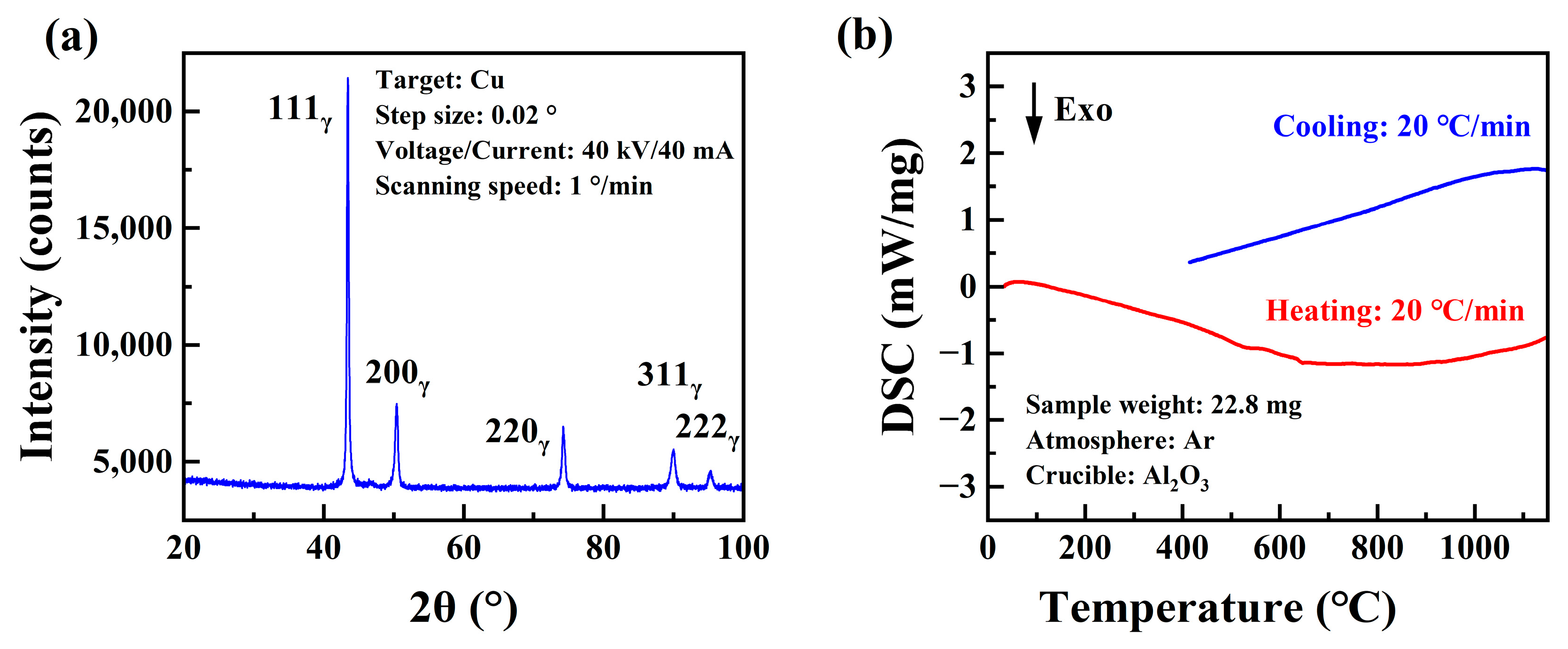

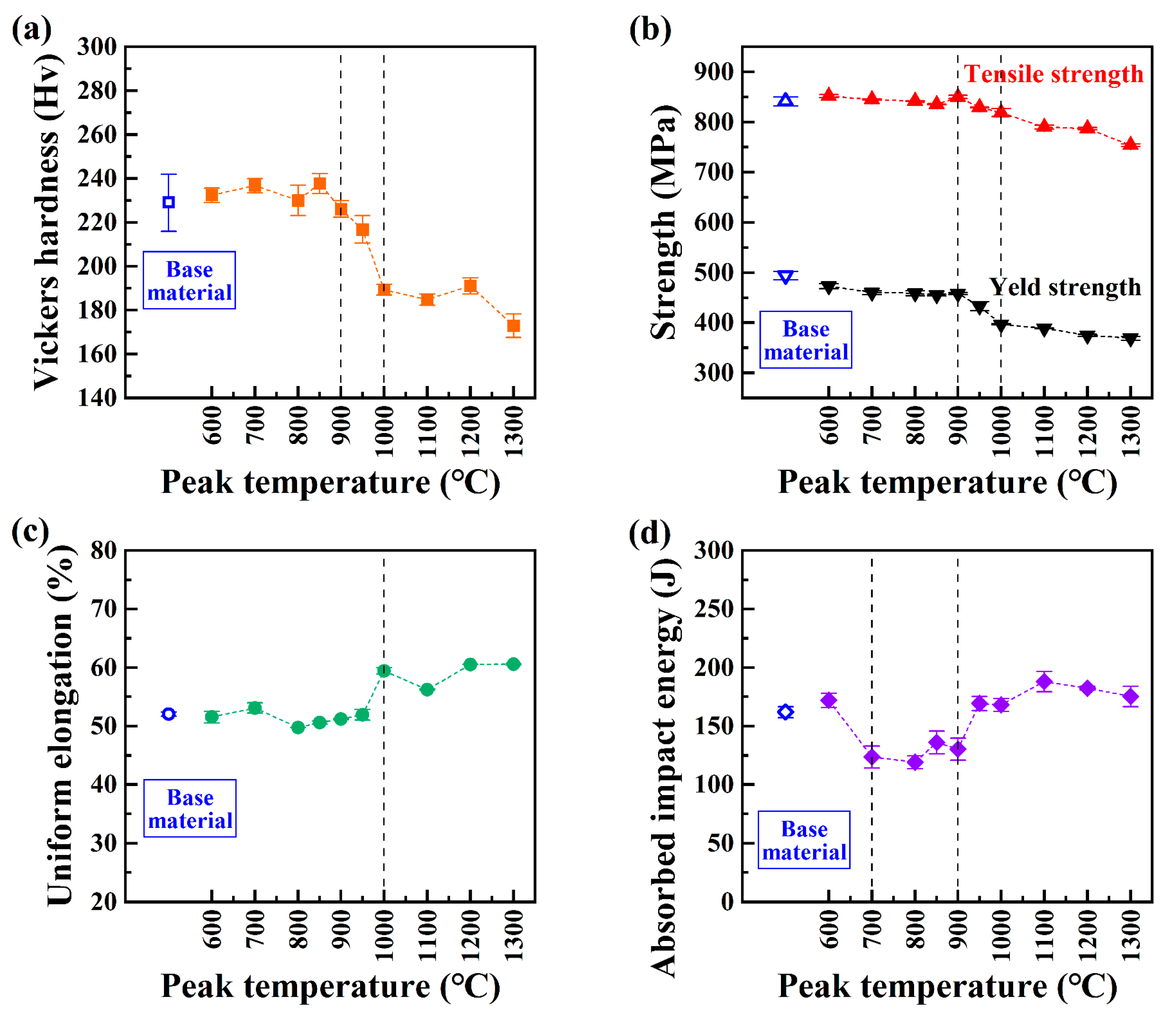

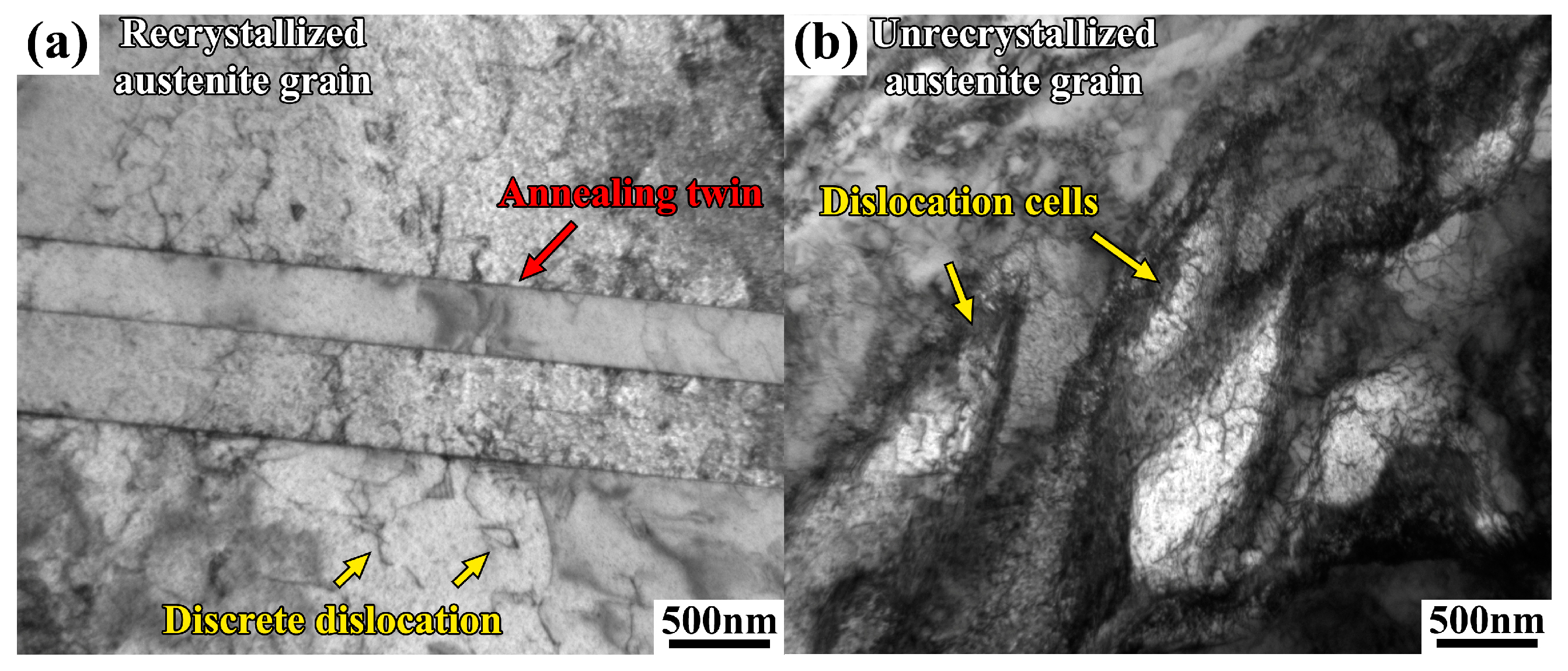
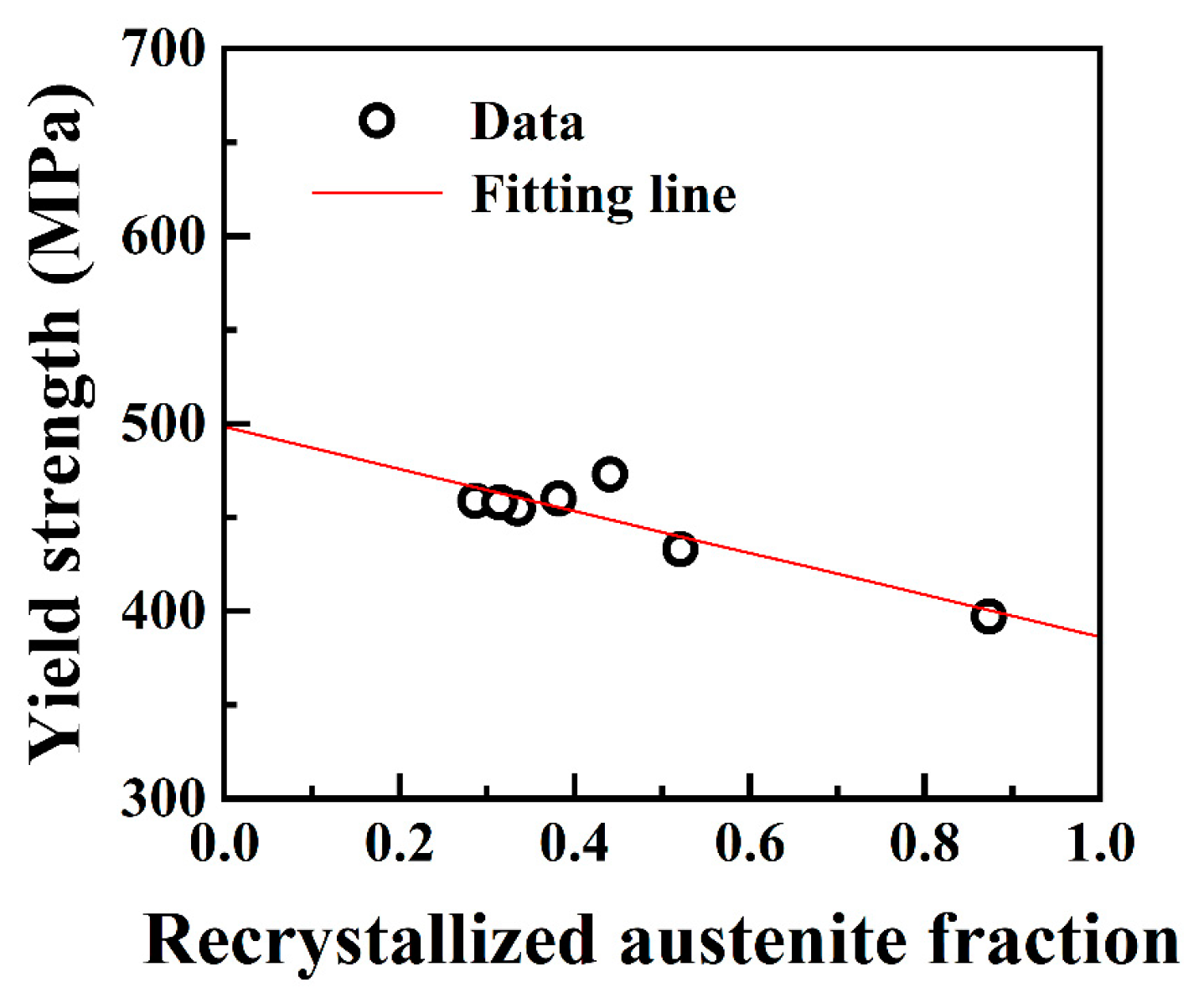
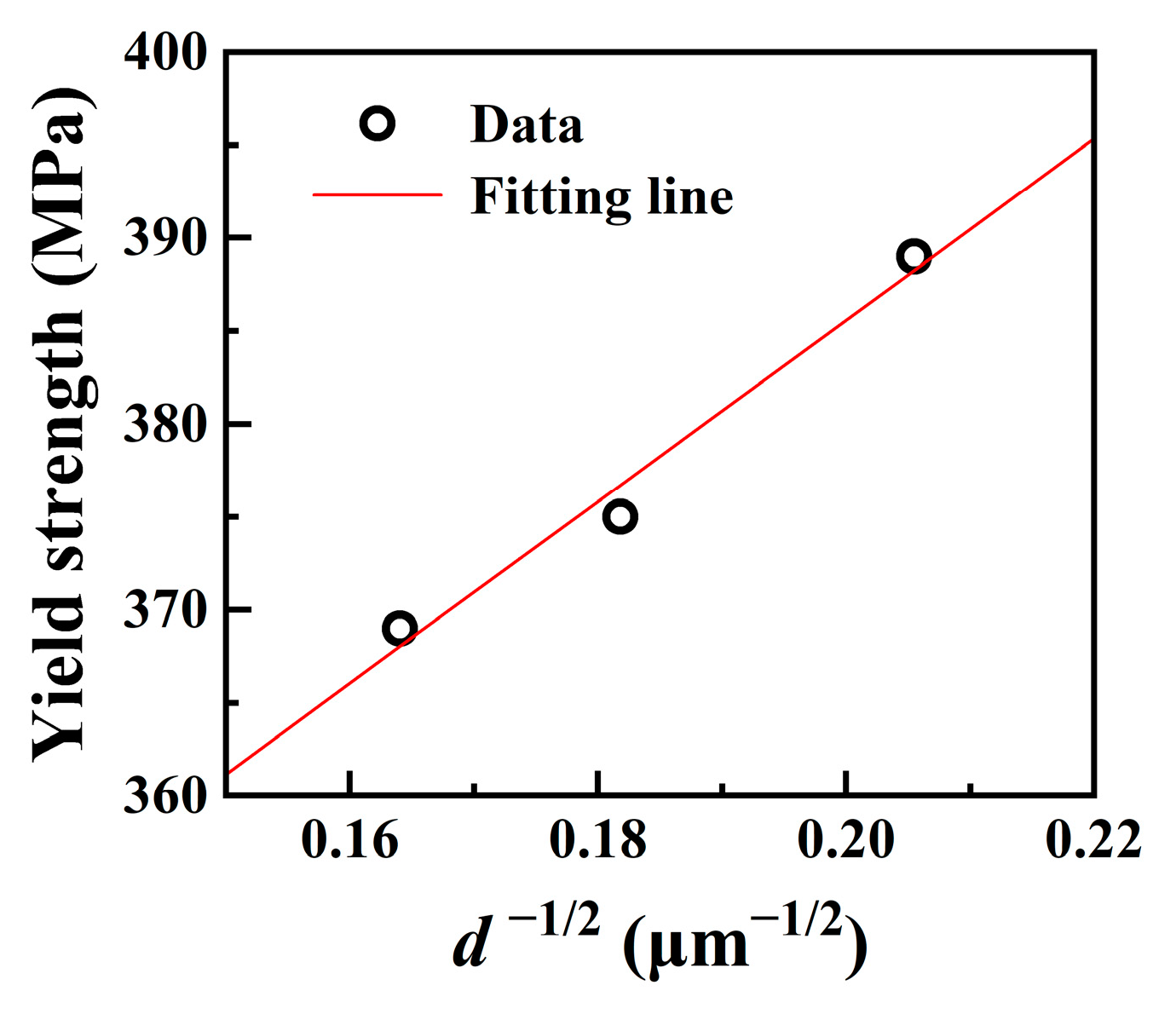

Disclaimer/Publisher’s Note: The statements, opinions and data contained in all publications are solely those of the individual author(s) and contributor(s) and not of MDPI and/or the editor(s). MDPI and/or the editor(s) disclaim responsibility for any injury to people or property resulting from any ideas, methods, instructions or products referred to in the content. |
© 2024 by the authors. Licensee MDPI, Basel, Switzerland. This article is an open access article distributed under the terms and conditions of the Creative Commons Attribution (CC BY) license (https://creativecommons.org/licenses/by/4.0/).
Share and Cite
Wang, Y.; Wang, H.; Peng, S.; Xia, B.; Zhu, H. The Dominant Role of Recrystallization and Grain Growth Behaviors in the Simulated Welding Heat-Affected Zone of High-Mn Steel. Materials 2024, 17, 2218. https://doi.org/10.3390/ma17102218
Wang Y, Wang H, Peng S, Xia B, Zhu H. The Dominant Role of Recrystallization and Grain Growth Behaviors in the Simulated Welding Heat-Affected Zone of High-Mn Steel. Materials. 2024; 17(10):2218. https://doi.org/10.3390/ma17102218
Chicago/Turabian StyleWang, Yangwen, Honghong Wang, Siyuan Peng, Bin Xia, and Hai Zhu. 2024. "The Dominant Role of Recrystallization and Grain Growth Behaviors in the Simulated Welding Heat-Affected Zone of High-Mn Steel" Materials 17, no. 10: 2218. https://doi.org/10.3390/ma17102218




